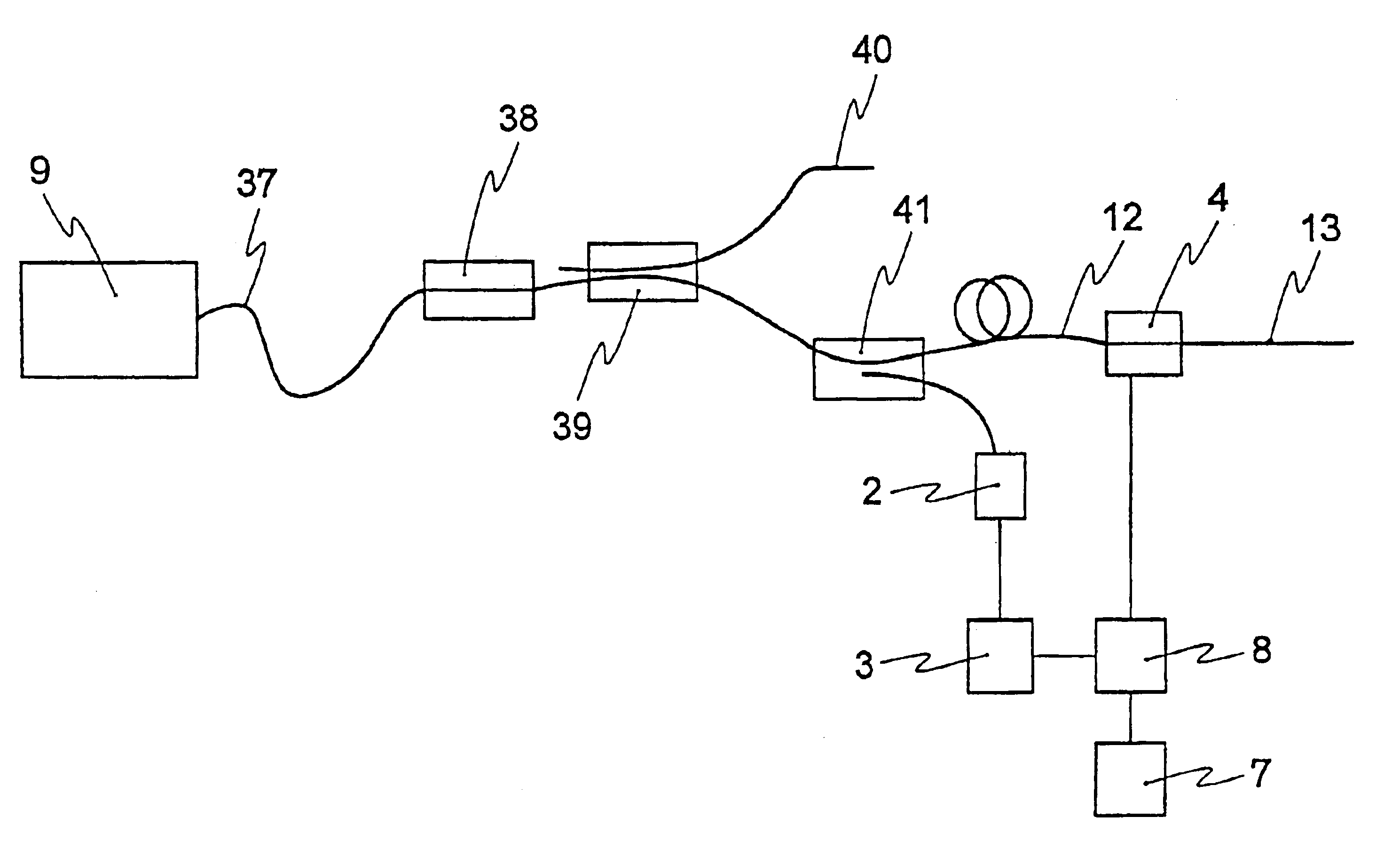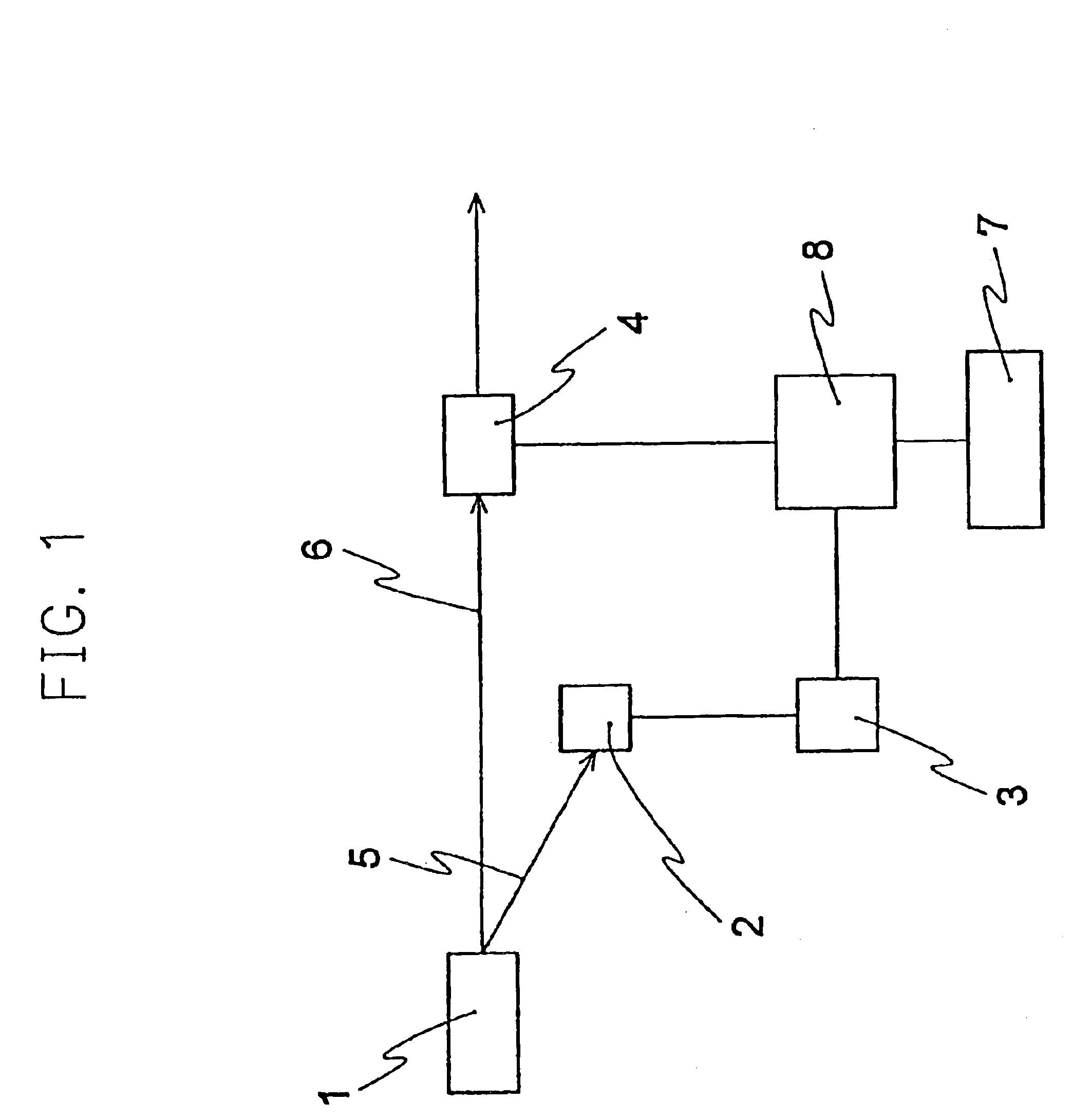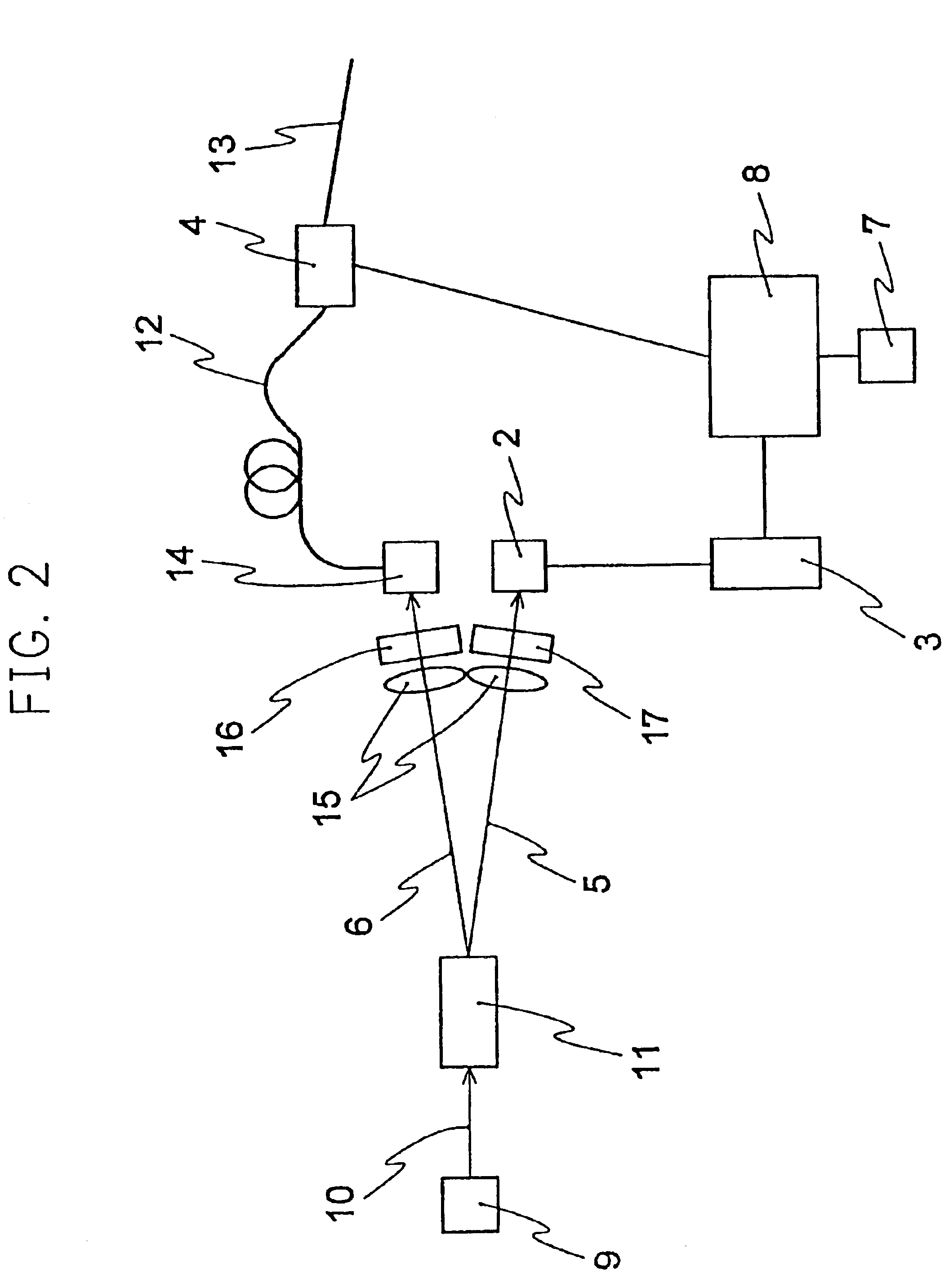Single-photon-emission apparatus
- Summary
- Abstract
- Description
- Claims
- Application Information
AI Technical Summary
Benefits of technology
Problems solved by technology
Method used
Image
Examples
embodiment 1
[0037]FIG. 1 is a general arrangement drawing of one embodiment of the invention. In FIG. 1, numeral 1 denotes a photon pair source that generates a photon pair that correlate with the generation time, numeral 2 denotes a photon detector for detecting the idler photon 5, numeral 3 denotes a differential circuit for differentiating the signal pulse generated from the photon detector, numeral 8 a gate device controller section for controlling the gate device 4 in response to the signal from the differentiation circuit 3 and the control clock from the clock generator 7.
[0038]FIG. 2 shows a detailed configuration of the present embodiment. In this embodiment, an optical pulse that contains only single photon is efficiently generated at a specific timing in the clock.
(Description on Photon Pair Generator)
[0039]In FIG. 2, numeral 9 is a light source of pumping light 10 for pumping the nonlinear optical medium 11. In the nonlinear optical medium 9, the idler photon 5 and the signal photon ...
embodiment 2
[0055]In Embodiment 1, APD of active quenching control was used as a detector 2, but it is also possible to apply voltage for a predetermined time in place of constantly applying voltage exceeding the breakdown voltage to APD. Referring now to FIG. 5, the control condition of such case is described. In FIG. 5, numeral 31 is a graph showing changes of voltage applied to APD with time, numeral 32 a graph showing the signal pulse from APD, and numeral 33 a graph showing differentiation signals outputted from the differentiation circuit 3.
[0056]In Embodiment 1, as described in the section about the active quenching, when the voltage higher than the breakdown voltage is applied to APD, APD has the infinite multiplication to incidence of one photon, and the output of APD enters the saturated breakdown state. In the present embodiment, the voltage applied to APD is controlled in conformity with the clock 18.
[0057]For the period from clock rise-up to about time τ as seen in Numeral 18, the ...
embodiment 3
[0059]In Embodiment 1, the wavelength of signal light generated was 702.2 nm, but needless to say, this wavelength is able to optionally changed by selecting a suitable pumping light source laser and nonlinear optical medium. For example, it is naturally possible to generate wavelengths in the vicinity of 1550 nm, 1310 nm and 800 nm, which are generally adopted to communication using optical fiber.
[0060]The method for generating a photon pair shown in Embodiment 1 (FIG. 3) is a method suited to obtain a photon pair beam with equal wavelengths and small angular dispersion, but it is possible to obtain a photon pair with different wavelengths by changing the optical axis direction of the BBO crystal for other object of use. In such event, the two tuning curves as shown in FIG. 3 come in contact with straight lines that correspond to different wavelengths, respectively. In such event as well, the photons are taken out at an angle, in which the tuning curves as shown in FIG. 3 come in c...
PUM
 Login to View More
Login to View More Abstract
Description
Claims
Application Information
 Login to View More
Login to View More - R&D
- Intellectual Property
- Life Sciences
- Materials
- Tech Scout
- Unparalleled Data Quality
- Higher Quality Content
- 60% Fewer Hallucinations
Browse by: Latest US Patents, China's latest patents, Technical Efficacy Thesaurus, Application Domain, Technology Topic, Popular Technical Reports.
© 2025 PatSnap. All rights reserved.Legal|Privacy policy|Modern Slavery Act Transparency Statement|Sitemap|About US| Contact US: help@patsnap.com



